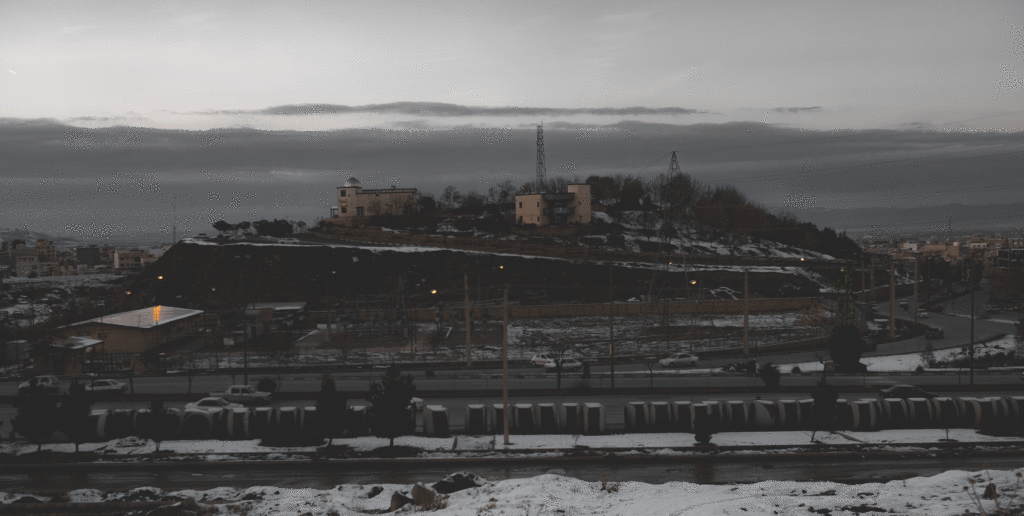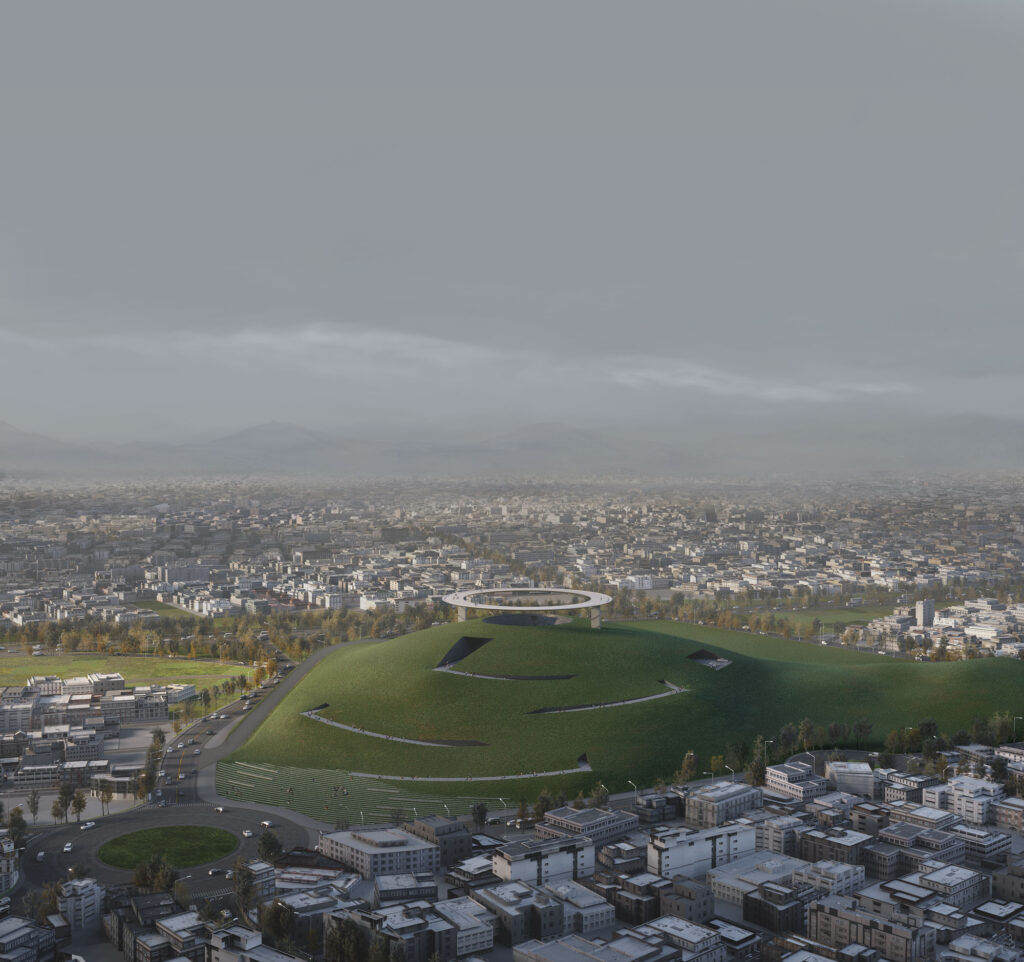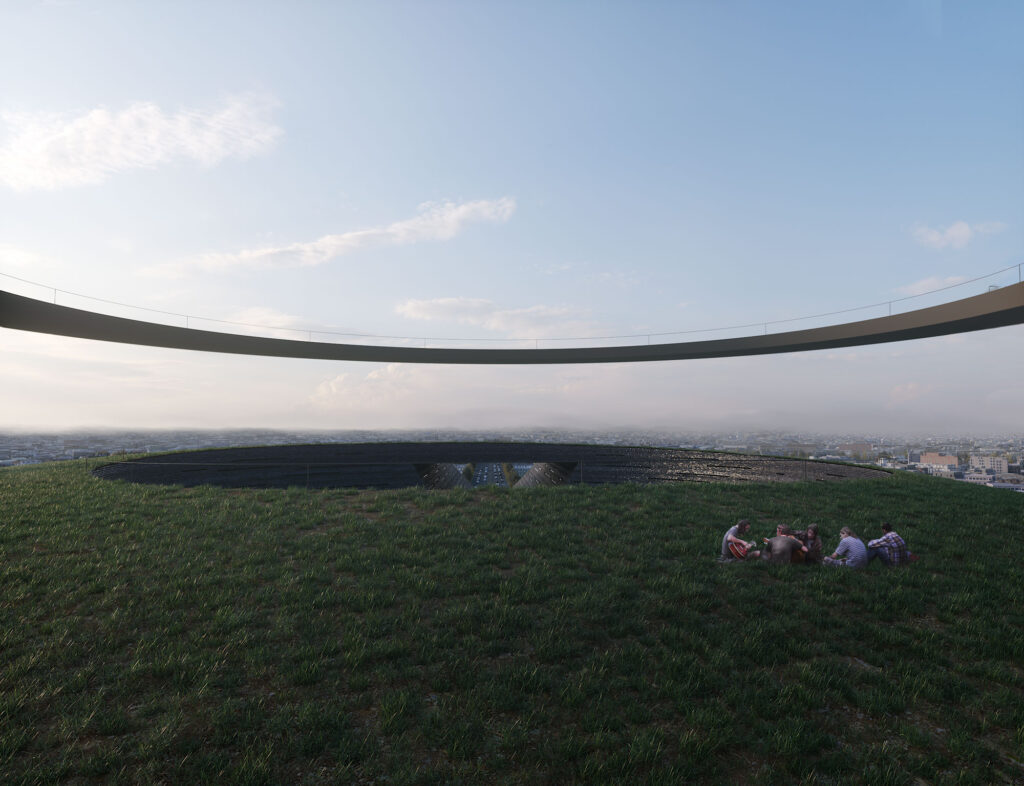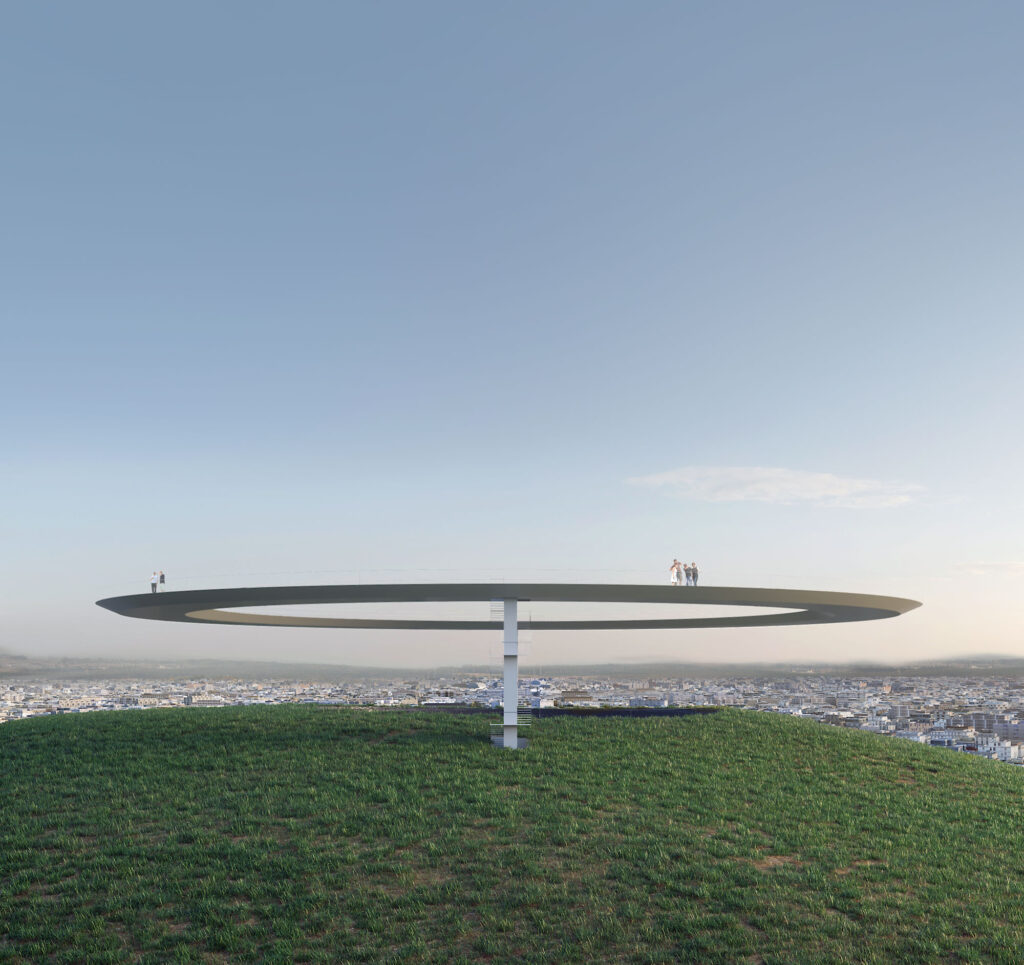
name: Amadai Cultural Center. client: Hamedan Municipality. situation: Finalist.
In 2018, Hamedan Municipality held a competition to design the “Amaday” Cultural Complex on Haj Enayat Hill. The 44,500 m² site included 3,000 m² for the complex, featuring a conference hall, café, observatory, workshops, and a landmark viewpoint, with the remainder as green space.

Iranian urbanism has historically been shaped by collective thinking, which forms the foundation of collective democracy. The core idea of this project is rooted in the culture of urban living in the ancient city of Hegmataneh, envisioning a space for communal gatherings. This concept transforms Haj Enayat Hill into a large-scale urban landmark, liberating its green space and creating a gently sloped hill that empowers the urban population to decide its function while also granting individual visitors the freedom to choose their perspective of the city—a place for gathering on open, expansive hills.

An analysis of the site reveals that the surrounding context is diverse and heterogeneous, with various uses. The presence of several schools and newly built complexes has increased the young population in the area. Additionally, the daily and weekly markets on the nearby street have attracted diverse groups of visitors to the hill. In this context, the project’s sloped pathway, which acts as a bridge from the main entrances to the central hall of the complex, has been designed as more than just a route.
By incorporating small-scale, friendly communal spaces along the sloped pathway, such as open-air galleries for young local artists and spaces for music and theater events, the hill is envisioned as a dynamic and active space throughout the day and night. This approach integrates the diverse groups of visitors and contributes to establishing a cohesive cultural identity for the entire hill.

